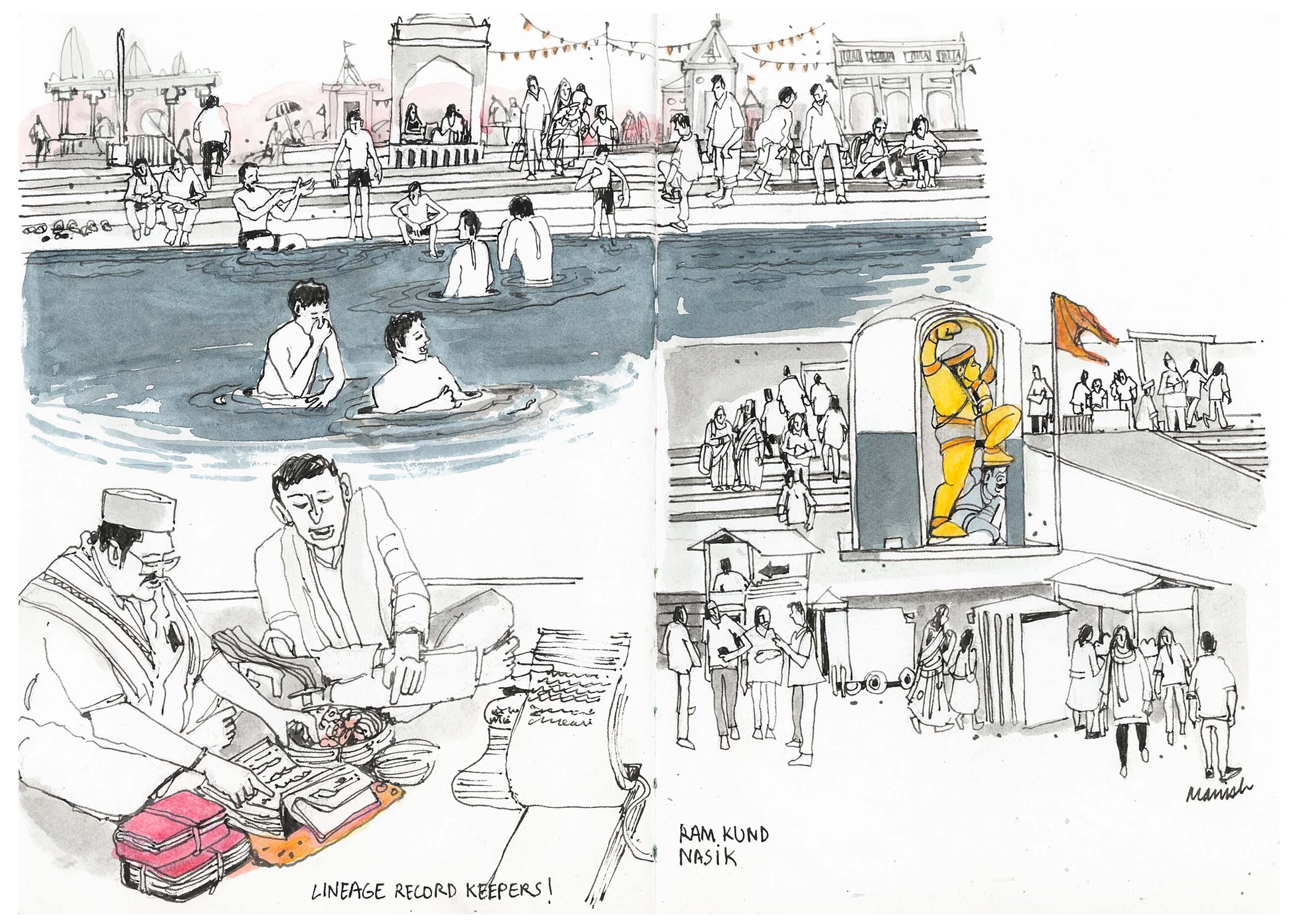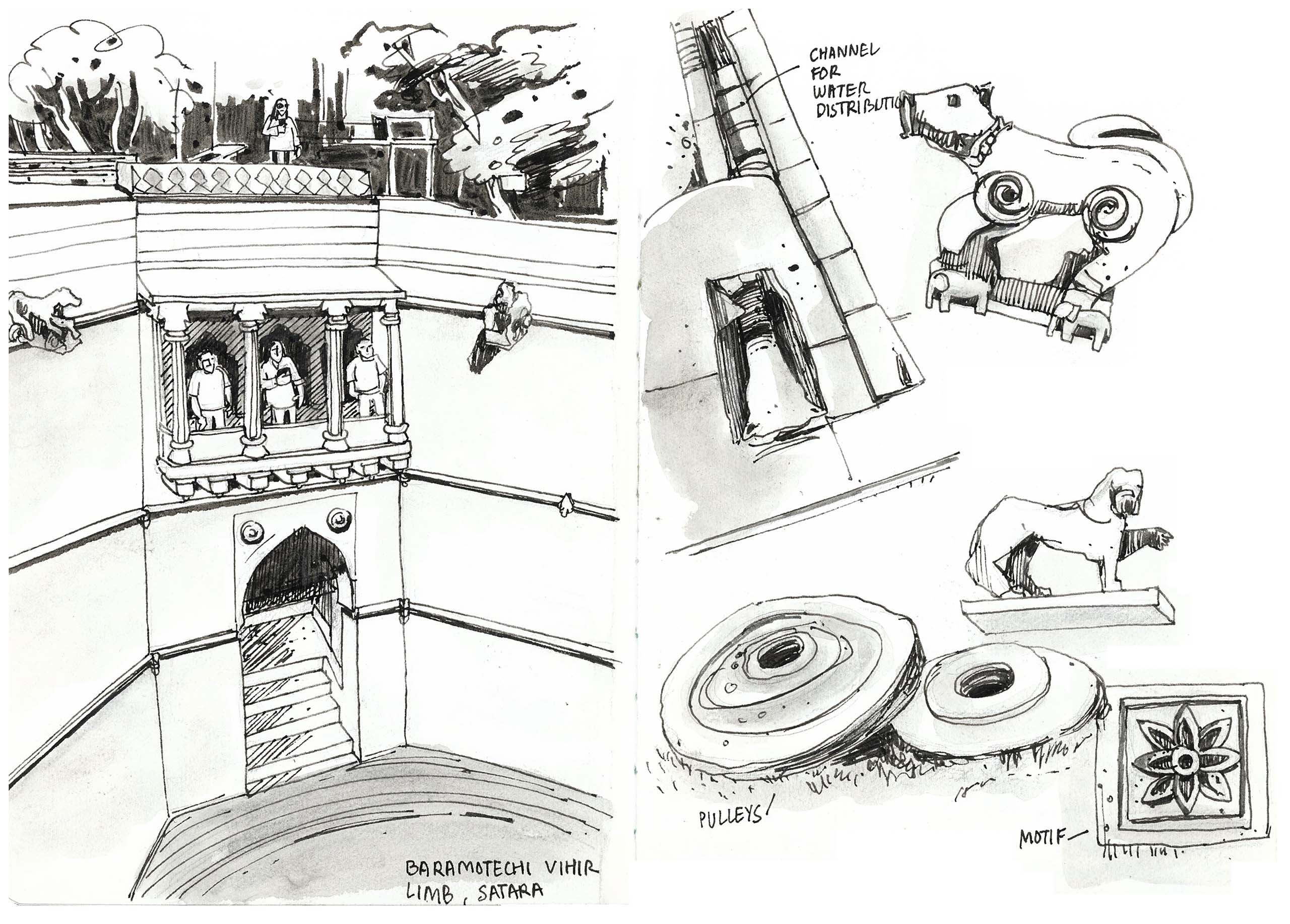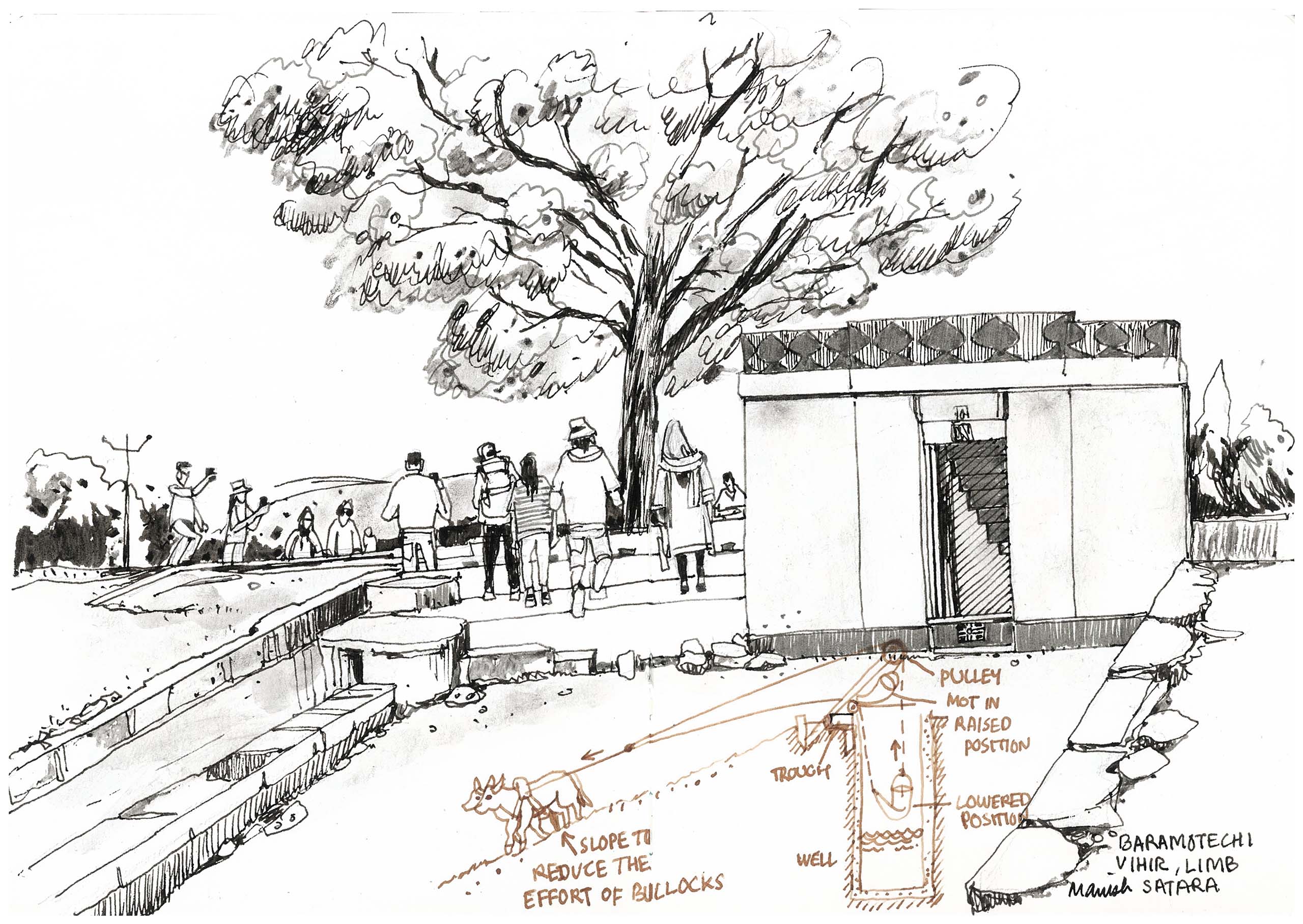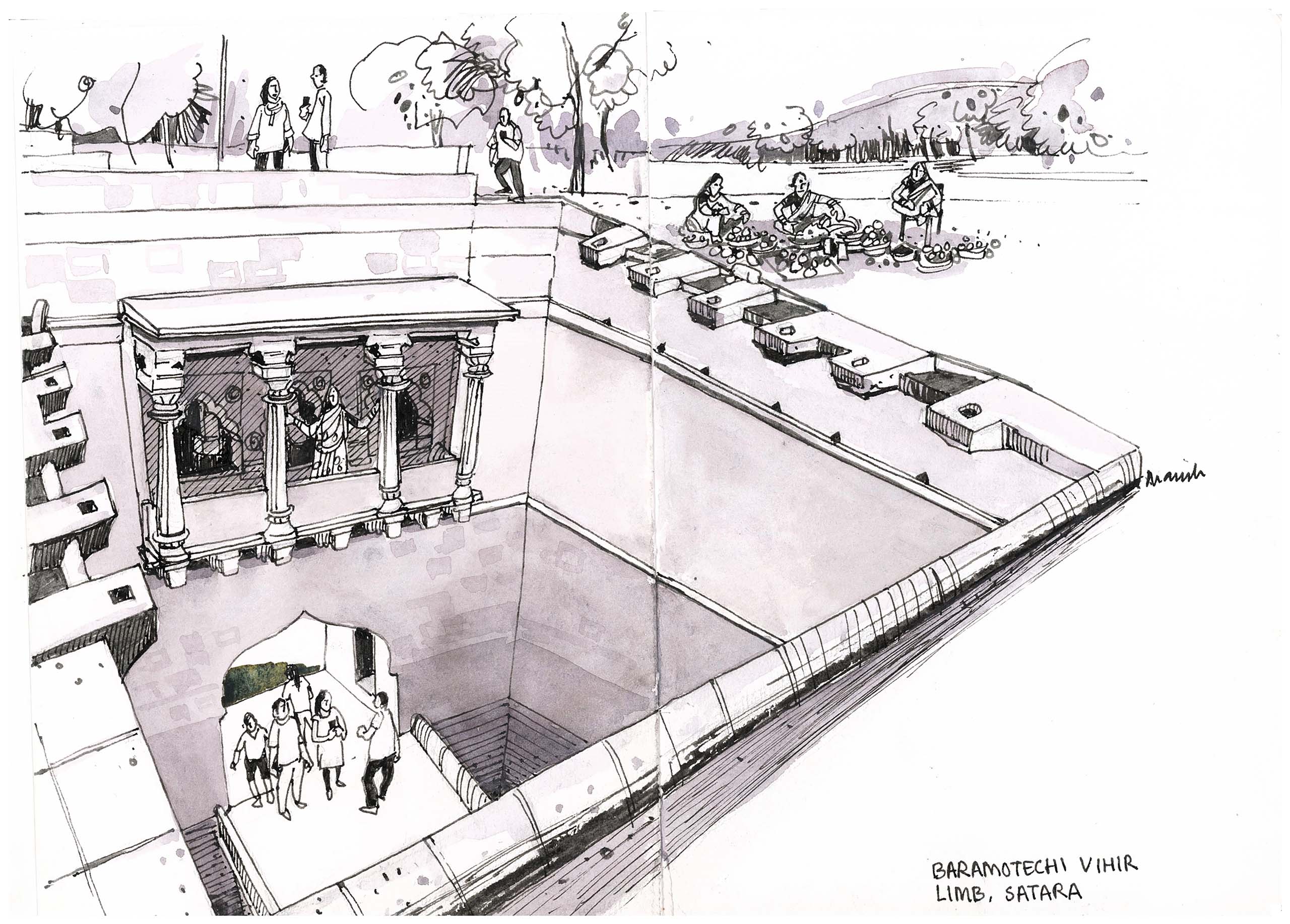
Commissioned in 1724 CE the well water was used to irrigate mango orchard, plantation nearby.
Water is a pivotal force, for physical sustenance and for deep spiritual significance in Indian culture. Across India, water management systems have thrived, notably in arid regions, with stepwells as vital elements.
Stepwells, colloquially known as baav, vav, barav, and in various other regional names, are architectural wonders built to conserve water. These structures, once vibrant community centers and lifelines for settlements, have weathered time’s trials. Sadly, shifting development priorities have led to neglect and disrepair for some, fading echoes of their once-cherished purpose.
Venturing into Western Maharashtra for Stepwells reportage project, my trail was to trace these historical marvels and capture the life that surrounds them. These stepwells, embedded in the land’s history, served diverse roles—providing water for settlements, agriculture, and trade routes, also fostering social gatherings and religious rituals.
There are over 1800+ stepwells geo-tagged and mapped in state, each carries tales of its own. From the elaborate architectural designs— be it square, rectangular, circular, or octagonal— to their cultural significance, these stepwells hold a mirror to the past. Their construction based on geological insights and hydrological knowledge of ancient times highlights a sustainable approach that we need to revisit in today’s water-starved regions.
My journey unveiled the varied facets of these stepwells—their geometry, layouts, significance in religious complexes, and integration with the surrounding environment. Some, nestled near temples or amid lush landscapes, stood as serene testaments to craftsmanship and purpose.
Diving deeper into their stories, I encountered stepwells like the Baramotechi vihir and Bajirao vihir designed with resting and meeting spaces, stepwells at Nashik for bathing and rituals purpose, Baneshwar temple stepwell has mausoleum nearby, stepwells at Mallikarjun temple and Ramling temple were activity hubs. While some stepwells, like the Manchar Stepwell, served utilitarian purposes solely for bathing, others, like the Ranjeshwar temple Kund, showcased intricate water management systems, offering insights into ancient water prioritization techniques. Hatti-Barav was unique being source water supply system for city. Each discovery revealed more than architectural prowess; they held tales of heroism, communal efforts, and the intertwining of history with these structures.
These stories weren’t limited to the stepwells alone; they extended to people past and present around… hero stones near Loni Bhapkar stepwell, rituals like pinda-daan at kunds, and the lineage records meticulously preserved by keepers through the ages. The effort to preserve stepwells in Maharashtra, driven by initiatives from locals, volunteers, passionate individuals, and active groups, is particularly a special story. Such endeavors, while inspirational, require collaborative efforts involving communities, experts, and authorities for sustainable success.
Stepwells aren’t just historical relics; they embody a sustainable solution to today’s water crises. Integrating traditional water systems, reimagining these reservoirs, and fostering community engagement could help combat water scarcity, preserve heritage, and create vibrant communal spaces.
My journey through these stepwells was a quest to document their tales, cultural heritage, and inspire a collective appreciation for our ancient wisdom. I carry the hope that these stories spark renewed interest and drive preservation and revival of stepwells across India.

The stepwell at Manchar popularly known as the ‘bathing barav’ was built during the 14th century. Due to the presence of the stream near the site, the groundwater table is high, and the barav does not become dry even during the summer. Overflow from the well gets released into the nearby stream. Unlike most other stepwells, this one is not a part of any temple complex and was constructed solely for a utilitarian purpose. A stone tablet placed in its parapet wall along the western side mentions that the village head of Manchar constructed it as part of drought relief work.

The stepwell called puskarni here presents a harmonious structure, impeccably maintained, enclosed by a stone wall adorned with 24 niches facing the tank. These niches possibly once housed images of Lord Vishnu, each depicting an intriguing narrative. The serene ambiance of this place invites solitary contemplation, drawing visitors to immerse in its tranquility for hours. The pavilion’s intricate carvings showcase a diverse array of imagery, inviting closer scrutiny. Surprisingly devoid of visitors, this temple complex, set in a remote location, holds immense historical and architectural significance.
At the bustling Ram Kund, Nashik
Sacred ritual, pinda-daan, unfolds—a tradition steeped in reverence for moksha or liberation of dead soul in family. Male folks tonsure head and perform pooja or worship at the steps or near kund. The dip in water has significance. Here you also encounter lineage record keepers – family records maintained over centuries! They document life and death and people who visited.
Baramotechi vihir, Limb
The well water was used to irrigate mango orchard, plantation nearby. It’s a private property of heirs now, open for public viewing. Large wide steps lead down inside the well, further an underground arched gate made of stone lead to stoned pathway over a rectangular chamber towards octagonal well. One would be surprise to this marvel which looks like a small underground palace. Built in Maratha architecture with simple decorative elements or motif on the sculptures, arches, viewing gallery, space for a small gathering, and levels arrangement, with multiple accesses through step adds to the beauty. It is named due the fact that it has twelve outlets for pulling water from well with bullocks with a mot-bucket.

The system of kunds exhibits a creative approach to water management. It ensures that water is utilized without any wastage. Moreover, through its design, it sets a priority for utilizing the available water. Firstly, for drinking; then for bathing; then for washing; and lastly for agriculture.

Stepwell attached to a 13th century Shiva temple with hemadpanti architecture and carved in black stone.
Hero stones, Veergal can be found in the village; period of these is identified based on jewelry, weapons, hairstyle on the carvings- get traced to various dynasties.
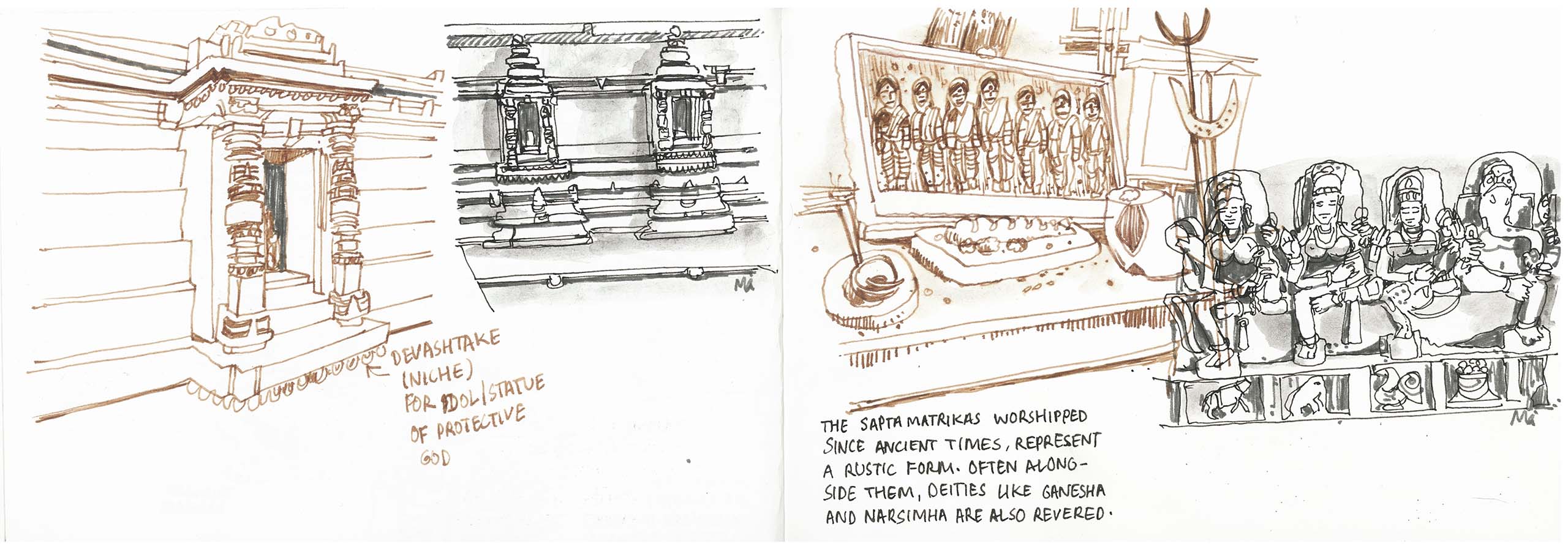

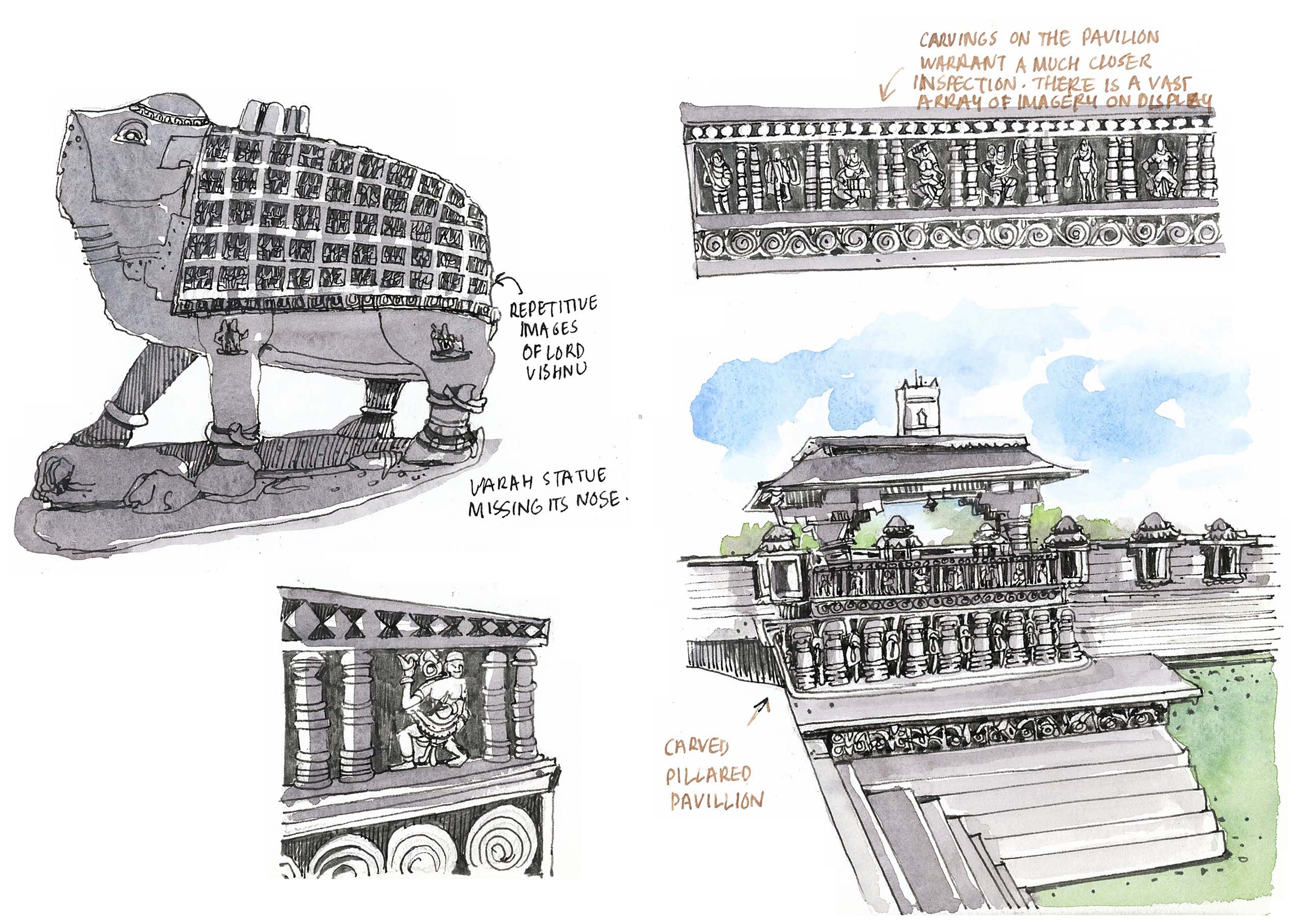

Extraordinary set of Hero Stones collected from the vicinity at the Someshwar temple.


Ahmednagar (now Ahilya Nagar) district had as many as 1718 wells with step discovered and documented by British Gazetteer in 1884. Hatti-barav believed to be from the Yadav period 1200 CE, rebuilt and extended diligently by administrator of the Nizam Shahi regime, Vazir Salabat Khan. Essentially, this stepwell served as an excellent example of city water management in the 17th century during the medieval history of Maharashtra.




The well built in mid 18th century in Satara city by Shahu Maharaj. It is named after Bajirao Peshwe who used to stay in nearby palace for some period in the year. 100 feet deep the well has 9 stone arches and in L shape. Well was use before the teracotta piping. There is effort to maintain the well; it was in news recently to get featured on Indian post card.
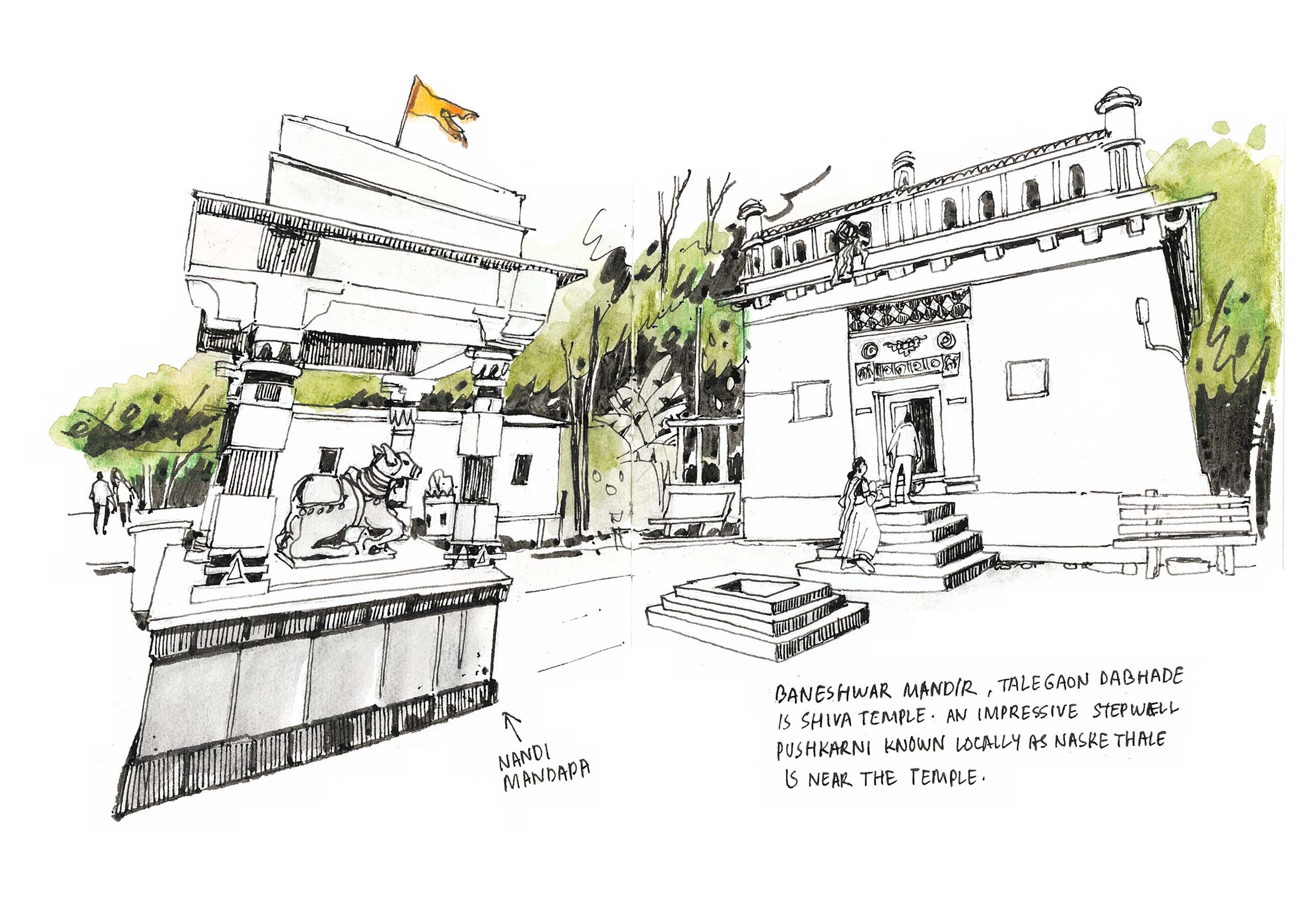

Somewhat concealed, in a small section of woodland is a hidden gem. An employee at crematorium help me locate and tell about the same. A small flight of steps leads down to a circular pool, with a passage way to one side that flanks the pool via a series of archways. Seems efforts is made to remove vegetation from around the structure time to time which grow back again. But it’s clear this place has been mostly forgotten.
Near the temple, tucked away under trees and probably missed by many visitors, is the Samadhi of Sarsenapati Khanderao Dabhade. This is an intriguing mausoleum, relief carvings while not exquisitely detailed still well executed and cover the exterior on all four sides of the initial platform. There is also Samadhi of Sarsenapati Umabai Dabhade, wife of Khanderao Dabhade, who was the first and only woman to become Commander-in-Chief of the Maratha forces in 1732. The village name include the family name Dabhade as honor and remembrance to the family.

Located in an old temple premises. Nandi outside the temple and stepwell an impressive tank pushkarni, known locally as Naske Thale, used currently to water plantation.
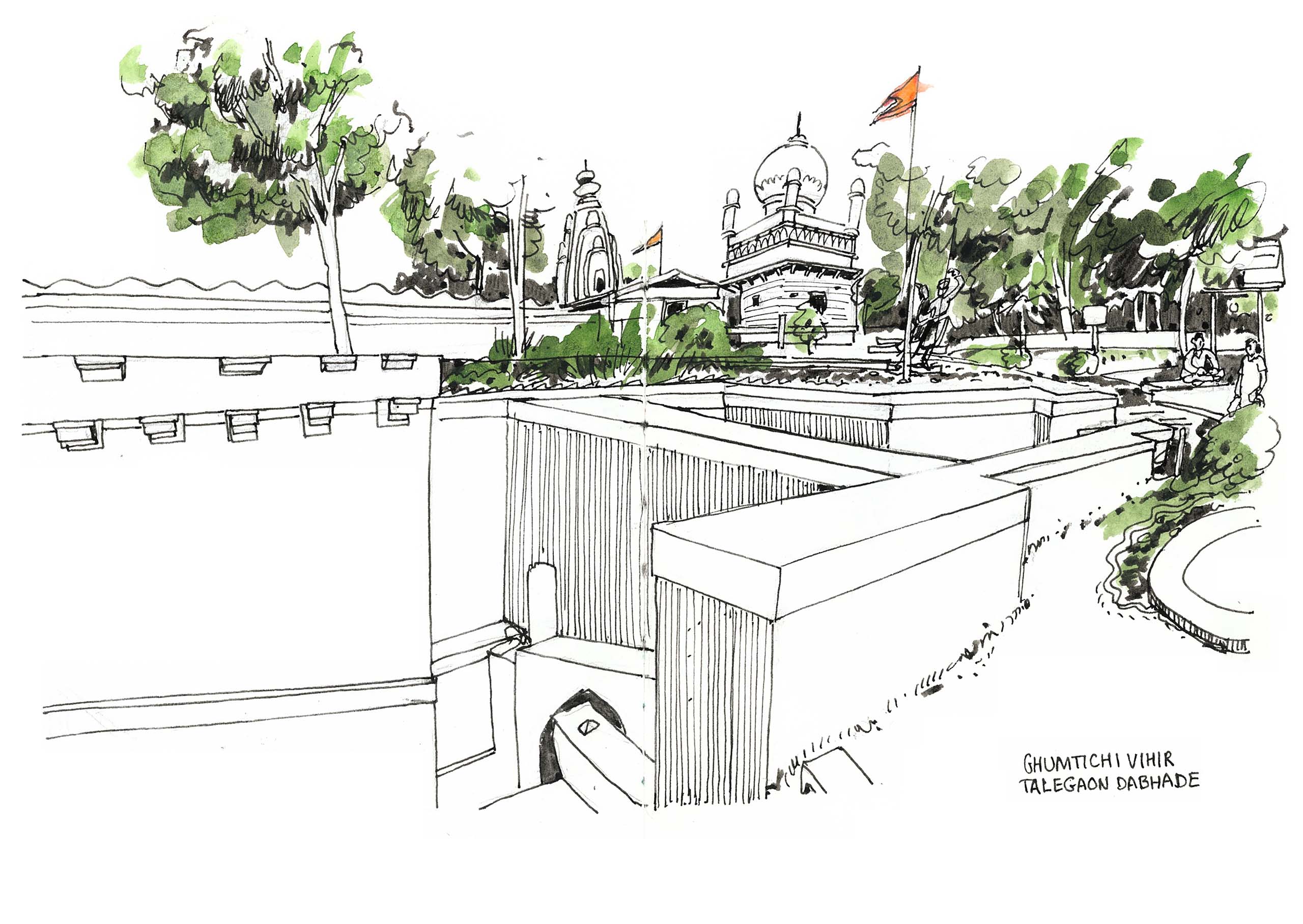
Most of the stepwells near temples, are near Shiva temple, some near crematorium. For the next stepwell Ghumtichi Vihir I had to trek about couple of kilometers, cross crematorium and a railway line. That also prepared me for the interesting experiences and locations, project was taking me to. Most of the heritage structures including stepwells has shilalekh- inscription or engraving often hold historical, religious, or cultural significance and provide information. Here the inscription show it being commissioned in 1723 CE.
Bhagirathi Kund at the SopanDev Samadhi mandir (Mausoleum). Villagers catchup at the templeafter the prayers.
Sketches at BaraMotechi Vihir Stepwell

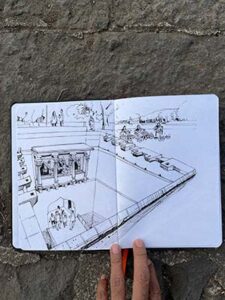
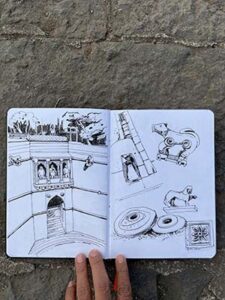
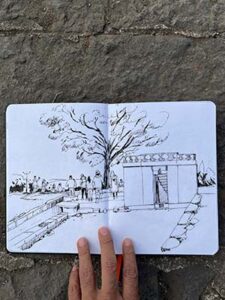
Ram Kund Ranjeshwar temple Kund

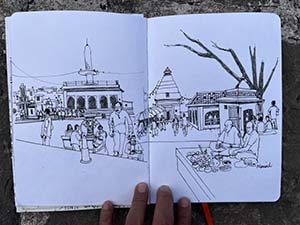
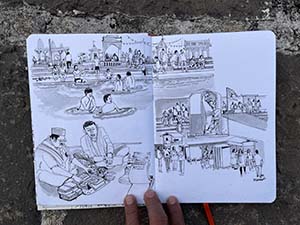
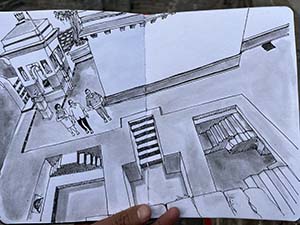
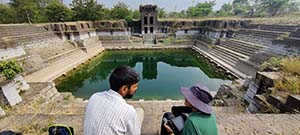
Share
Recent Posts
Drawing Attention June 2024
Drawing Attention, the official zine of the Urban Sketchers organization, communicates...
Read MoreVolunteer Opportunity: Urban Sketchers Seeks Fundraising Director
HOME Are you passionate about art and fostering a global artistic community?...
Read MoreThe USk Regional Events Grant Funding Programme 2024 / 2025
Season three of the USk Regional Events Grant Funding Programme is...
Read MoreCheck Out the Brand New USk Shop
Guess what? Our Urban Sketchers Shop just leveled up with some seriously...
Read More
